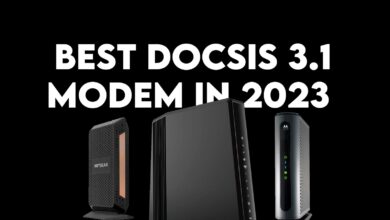HDMI 2.1 vs DisplayPort 1.4: Which is Better in 2024?
- HDMI 2.1 offers higher bandwidth, better gaming features, and dynamic HDR, suitable for high-end TVs, consoles, and streaming devices.
- DisplayPort 1.4 provides more flexibility with multi-stream transport and adaptive sync, ideal for PC gaming and professional displays.
- The choice between HDMI 2.1 and DisplayPort 1.4 depends on your device compatibility and display needs; HDMI 2.1 is better for enhanced gaming and multimedia, while DisplayPort 1.4 is suited for multi-display setups and PCs.
HDMI and DisplayPort are two of the most common connector types for transmitting video and audio from devices to displays. They both have different versions that offer different features and capabilities. In this article, we will compare the latest versions of these connectors, HDMI 2.1 and DisplayPort 1.4, and see which one is better for your display needs.
But first, let’s learn a little more about display output ports in general and their different types.
Table of Contents
What Are Display Output Ports?
Display output ports are the connectors that allow you to connect your computer or other devices to a monitor, TV, or projector. They transmit video and sometimes audio signals from the source to the display. There are different types of display output ports, each with its own advantages and disadvantages. Some of the most common ones are:
- HDMI: High-Definition Multimedia Interface. This is the most widely used port for connecting devices to TVs, monitors, and projectors. It can carry both video and audio signals, and supports high resolutions and refresh rates. HDMI is also compatible with other standards, such as DVI and VGA, with adapters. There are different versions of HDMI, such as HDMI 1.4, HDMI 2.0, and HDMI 2.1, which offer different features and capabilities.
- DVI: Digital Visual Interface. This is an older port that is mainly used for connecting computers to monitors. It can only carry video signals, so you need a separate cable for audio. DVI supports high resolutions and refresh rates, but not as high as HDMI or DisplayPort. There are different types of DVI, such as DVI-D, DVI-I, and DVI-A, which differ in the type of signal they can transmit (digital, analog, or both).
READ MORE: How to Identify USB Ports by their Symbols ➜
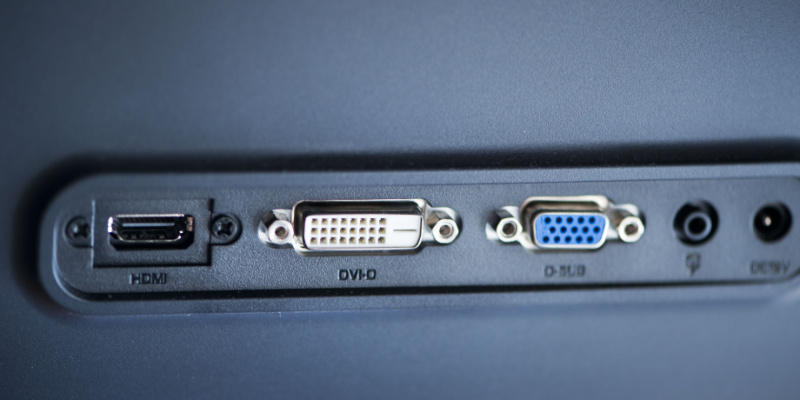
- VGA: Video Graphics Array. This is the oldest and most legacy port that is still used for connecting devices to displays. It can only carry analog video signals, so you need a separate cable for audio. VGA supports low resolutions and refresh rates and is prone to interference and signal degradation. VGA is only recommended when there is no other option available.
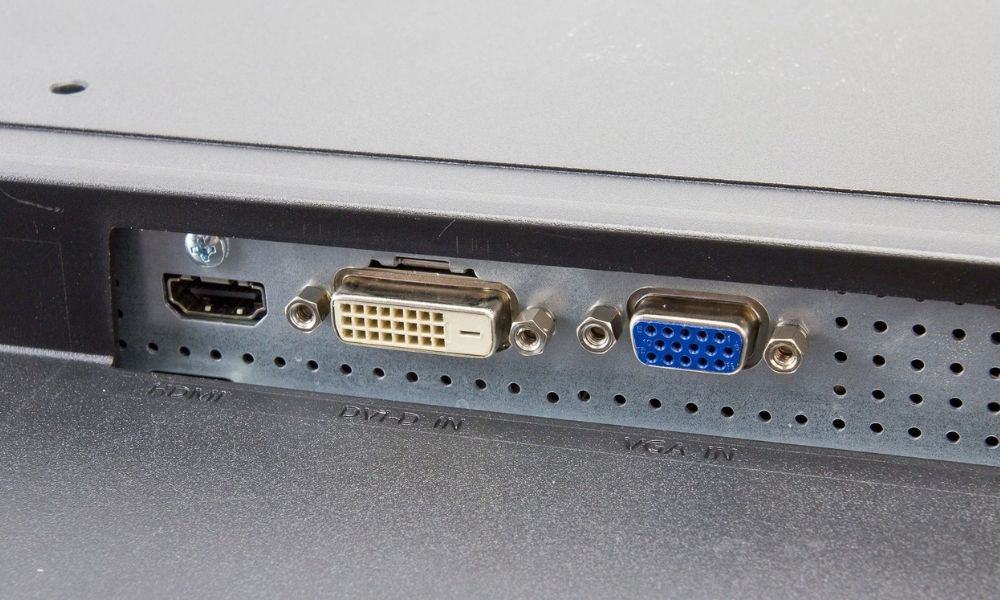
- DisplayPort: This is a newer port that is designed to replace VGA and DVI. It can carry both video and audio signals, and supports very high resolutions and refresh rates. DisplayPort is also compatible with other standards, such as HDMI and DVI, with adapters. There are different versions of DisplayPort, such as DisplayPort 1.2, DisplayPort 1.4, and DisplayPort 2.0, which offer different features and capabilities.
- USB-C: This is a versatile port that can be used for various purposes, such as data transfer, power delivery, and display output. It can carry both video and audio signals, and supports high resolutions and refresh rates. USB-C is also compatible with other standards, such as HDMI and DisplayPort, with adapters. There are different versions of USB-C, such as USB 3.1, USB 3.2, and USB 4.
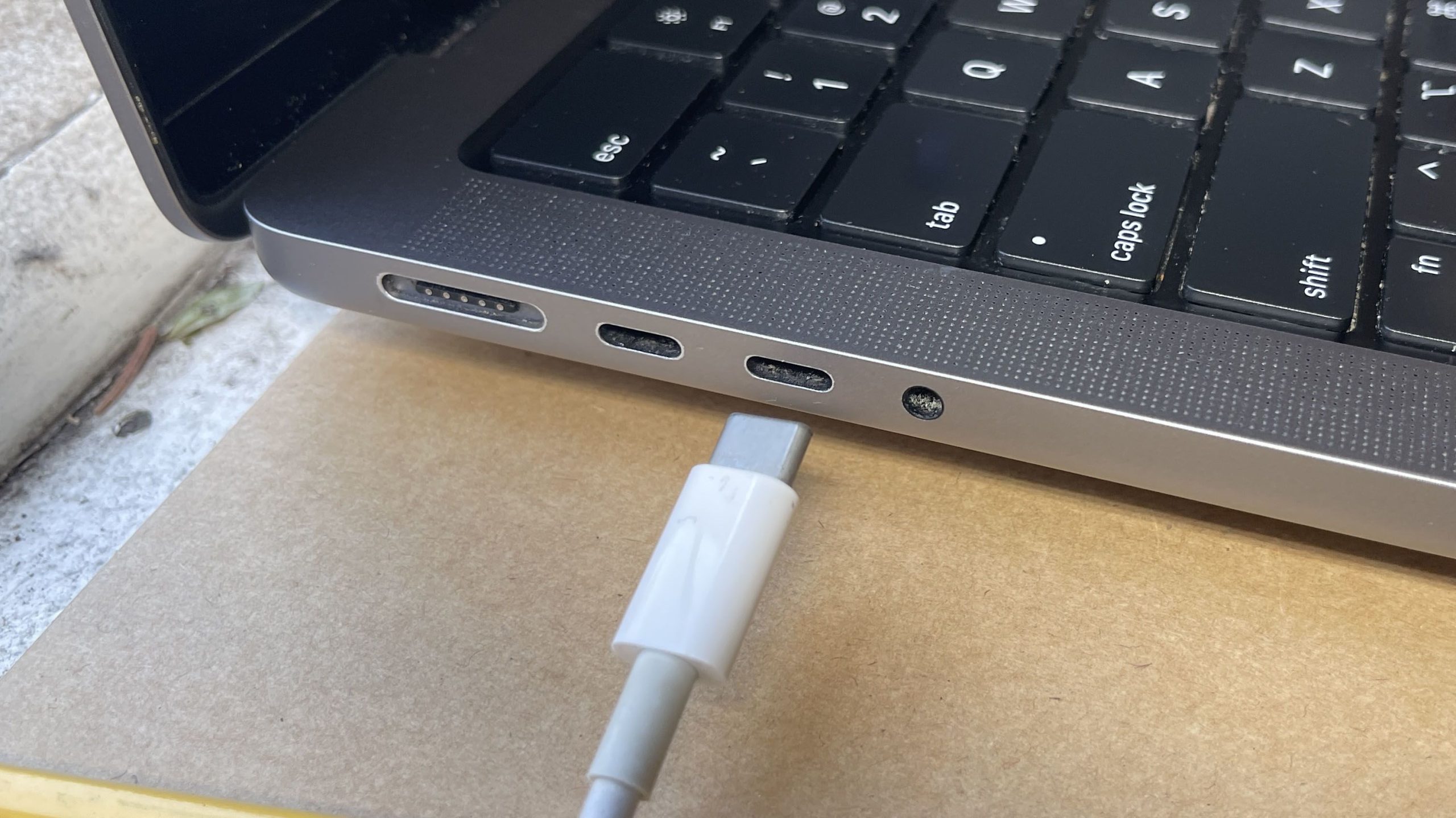
- Thunderbolt: This is a specialized port that combines the features of USB-C and DisplayPort. It can carry both video and audio signals and supports very high resolutions and refresh rates. Thunderbolt is also capable of transferring data and power at very high speeds. Thunderbolt is mainly used for connecting devices to external monitors, docks, and storage devices. There are different versions of Thunderbolt, such as Thunderbolt 1, Thunderbolt 2, and Thunderbolt 3.
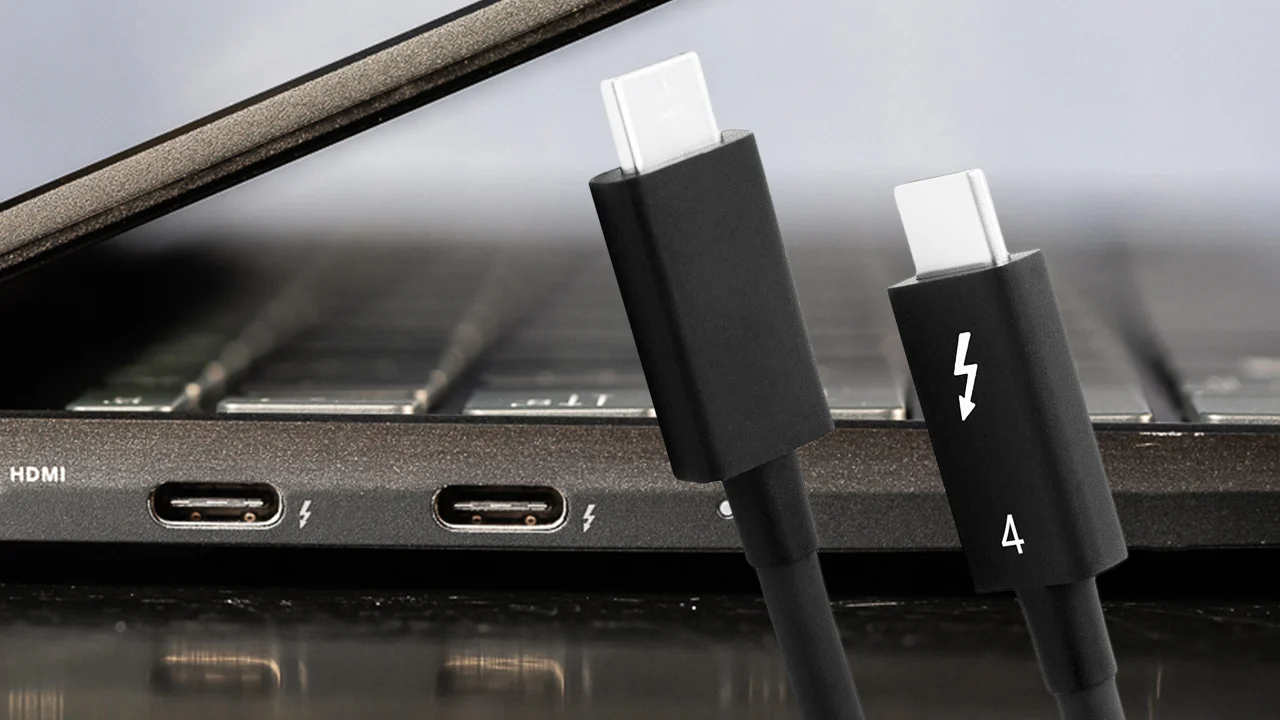
READ MORE: 8 Quick & Easy Fixes for No Signal Problem on Monitors ➜
What is HDMI 2.1?
HDMI 2.1 is the newest version of the High-Definition Multimedia Interface (HDMI), which has been the standard interface for consumer devices for the past two decades. HDMI 2.1 offers significant improvements over its predecessors, such as:
- A higher bandwidth of 48 Gbps, which allows for higher resolutions and refresh rates, such as 4K at 120 Hz and 8K at 60 Hz.
- A new encoding scheme called 16b/18b, which reduces the overhead and increases the efficiency of data transmission.
- Support for dynamic HDR, which adjusts the brightness and contrast of the image according to the content and the display capabilities.
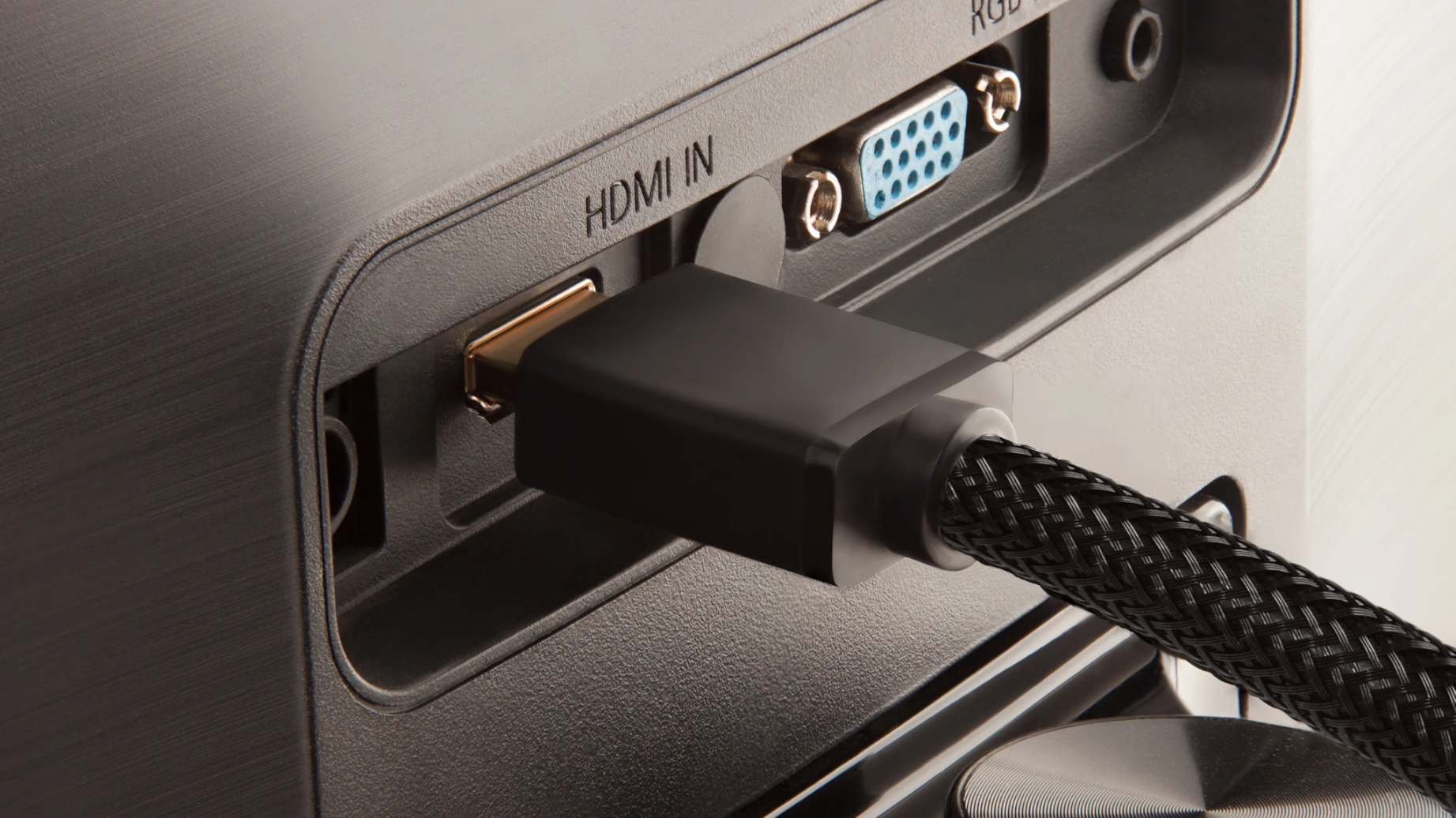
- Support for variable refresh rate (VRR), which synchronizes the display’s refresh rate with the device’s output, reducing screen tearing and stuttering.
- Support for auto low latency mode (ALLM), which automatically switches the display to the lowest latency mode when gaming or using interactive applications.
- Support for enhanced audio return channel (eARC), which enables high-quality audio formats, such as Dolby Atmos and DTS:X, to be transmitted from the display to the audio system.
HDMI 2.1 is compatible with older HDMI devices, but you will need a new HDMI 2.1 cable to enjoy the full benefits of the new features. HDMI 2.1 is mainly used for TVs, game consoles, and streaming devices, but it is also becoming more available for monitors and laptops.
READ MORE: HDMI 2.0 vs HDMI 2.1 – Key Differences & Which is Better? ➜
What is DisplayPort 1.4?
DisplayPort 1.4 is one of the latest versions of the DisplayPort protocol, which has been the preferred interface for PC gaming and professional displays. DisplayPort 1.4 offers some advantages over HDMI 2.1, such as:
- A higher data rate of 25.92 Gbps, which allows for higher resolutions and refresh rates, such as 4K at 144 Hz and 8K at 60 Hz, without compression.
- Support for Display Stream Compression (DSC) 1.2a, which enables lossless compression of video and audio signals, increasing the effective bandwidth and reducing the power consumption.
- Support for static HDR, which delivers high dynamic range images with 10-bit or 12-bit color depth and wide color gamut.
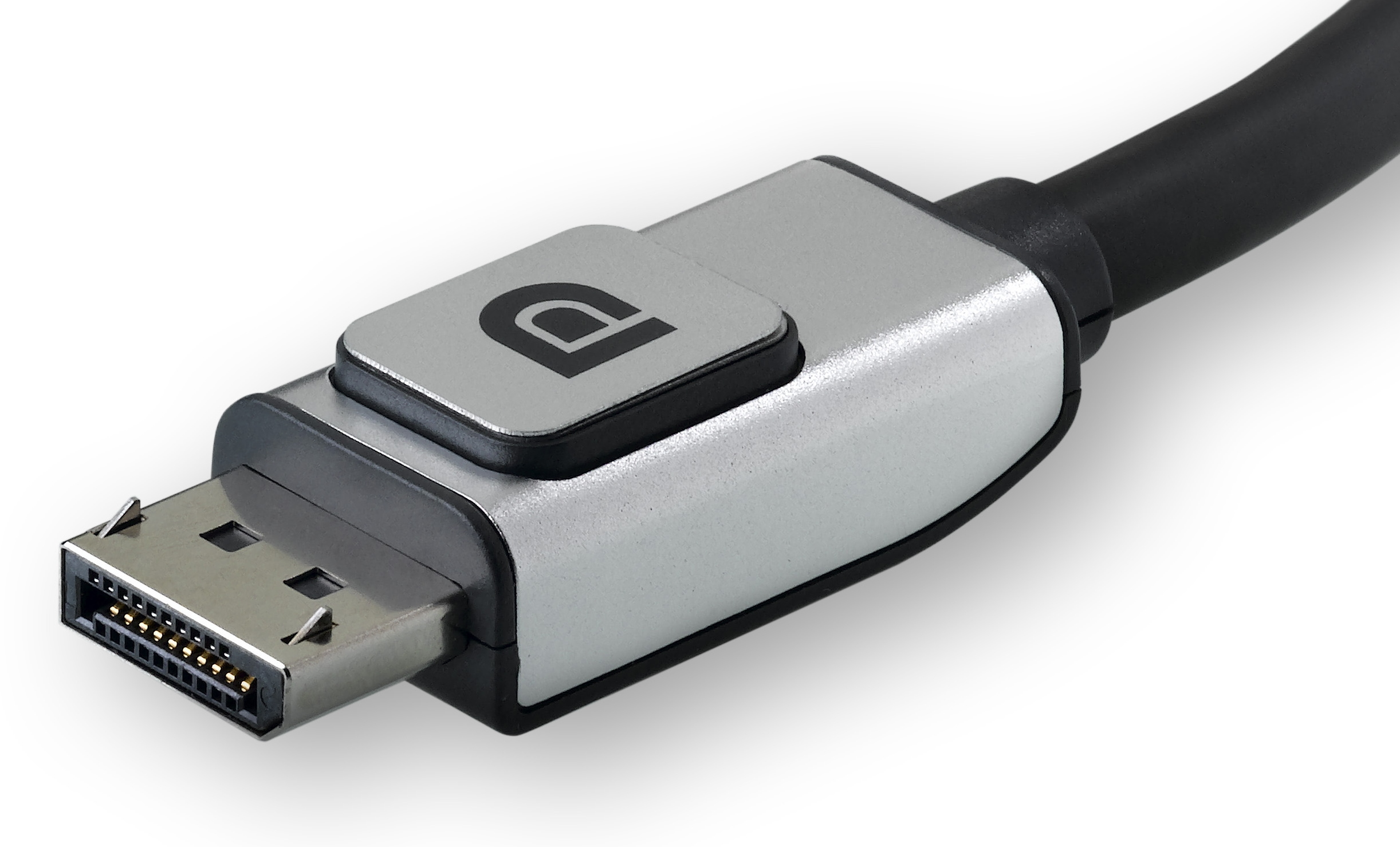
- Support for adaptive sync, which is similar to VRR, but also compatible with AMD FreeSync and NVIDIA G-Sync technologies, which optimize the gaming performance and reduce input lag.
- Support for multi-stream transport (MST), which allows for daisy-chaining multiple displays or splitting the signal to multiple displays using a hub or a splitter.
DisplayPort 1.4 is compatible with older DisplayPort devices, but you will need a new DisplayPort 1.4 cable to enjoy the full benefits of the new features. DisplayPort 1.4 is mainly used for monitors, laptops, and desktop PCs, but it is also becoming more available for TVs and game consoles.
READ MORE: 1080p vs. 1080i – The Difference Between HD Resolutions ➜
HDMI 2.1 vs DisplayPort 1.4
Both HDMI 2.1 and DisplayPort 1.4 have their advantages and disadvantages, depending on the use case and the features you need. Here is a detailed comparison of HDMI 2.1 and DisplayPort 1.4, based on some of the most important factors:
| Factor | HDMI 2.1 | DisplayPort 1.4 |
|---|---|---|
| Maximum Bandwidth | 48 Gbps ✅ | 32.4 Gbps |
| Maximum Data Rate | 42 Gbps ✅ | 25.92 Gbps |
| Maximum Resolution and Refresh Rate | 10K at 60 Hz, 8K at 120 Hz, 4K at 240 Hz ✅ | 8K at 60 Hz, 5K at 120 Hz, 4K at 240 Hz |
| Color Depth and Chroma Subsampling | Up to 16-bit, 4:4:4 ✅ | Up to 10-bit, 4:4:4 |
| HDR support | Dynamic HDR, HDR10, HDR10+, Dolby Vision ✅ | Static HDR, HDR10 |
| Audio support | Up to 32 channels, Dolby Atmos, DTS:X, eARC ✅ | Up to 8 channels, Dolby Atmos, DTS:X |
| Variable Refresh Rate (VRR) support | Yes, FreeSync, G-Sync Compatible ✅ | Yes, FreeSync, G-Sync, Adaptive-Sync ✅ |
| Auto Low Latency Mode (ALLM) support | Yes ✅ | No |
| Quick Frame Transport (QFT) support | Yes ✅ | No |
| Quick Media Switching (QMS) support | Yes ✅ | No |
| Enhanced gaming features | Yes, Game Mode VRR, ALLM, QFT, QMS ✅ | No |
| Multi-stream Transport (MST) support | No | Yes, up to 4 displays ✅ |
| Cable Length | Up to 3 meters for passive cables, up to 15 meters for active cables ✅ | Up to 2 meters for passive cables, up to 15 meters for active cables |
| Connector Shape | Trapezoidal, 19 pins | Rectangular, 20 pins ✅ |
| Compatibility | Backward compatible with previous HDMI versions, widely used in consumer devices ✅ | Backward compatible with previous DisplayPort versions, mainly used in PC devices ✅ |
As you can see, HDMI 2.1 and DisplayPort 1.4 have similar capabilities in terms of resolution, refresh rate, color depth, and VRR support. However, HDMI 2.1 has a higher bandwidth and data rate, which allows it to support higher resolutions and refresh rates, as well as dynamic HDR and enhanced gaming features.
DisplayPort 1.4, on the other hand, has the advantage of supporting MST, which enables you to connect multiple displays to a single port. DisplayPort 1.4 can also be used through alternative modes, such as USB-C and Thunderbolt 4, which increases its versatility and compatibility.
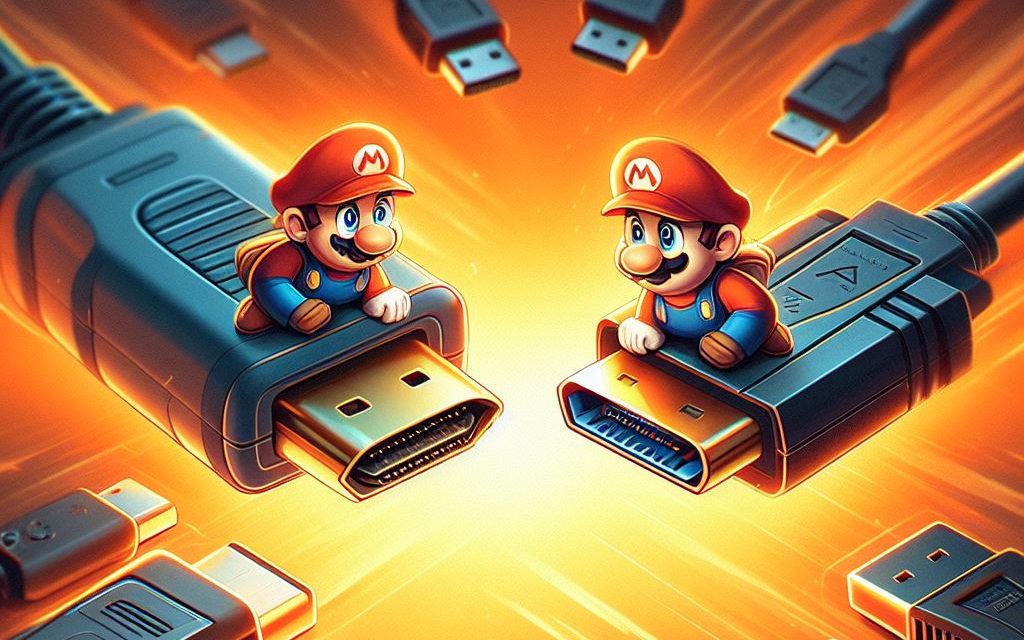
The choice between HDMI 2.1 and DisplayPort 1.4 depends on your personal preference and the devices you have. If you are looking for the best performance and features for gaming, especially on consoles, HDMI 2.1 might be the better option.
If you are looking for more flexibility and connectivity options for multiple displays, especially on PCs, DisplayPort 1.4 might be the better option. Either way, you will need a compatible cable and display to enjoy the full benefits of these standards.
READ MORE: 2K vs 4K – Which One Should You Go For? ➜
HDMI 2.1 vs DisplayPort 1.4: Which is Better?
Here are some of the pros and cons of HDMI 2.1 and DisplayPort 1.4.
| HDMI 2.1 | DisplayPort 1.4 |
| Pros | Pros |
| Higher bandwidth and data rate | More flexibility and lower cost |
| Better gaming features (VRR, ALLM, QFT, eARC) | Better support for multiple displays |
| Better audio quality (eARC) | More options for cable types (USB-C, Thunderbolt 4) |
| More widely compatible and available | Can support high resolutions and refresh rates with compression |
| Cons | Cons |
| More expensive and less common | Lower bandwidth and data rate |
| Less flexible and more limited | Worse gaming features (VRR and QFT not standardized) |
| Cannot support high resolutions and refresh rates without compression | Worse audio quality (ARC) |
| Fewer options for cable types | Less widely compatible and available |
They both have their pros and cons, depending on what you want to do with them. For example, if you want to play games, watch movies, or listen to music, HDMI 2.1 might be better for you, because it can support higher quality and smoother performance.
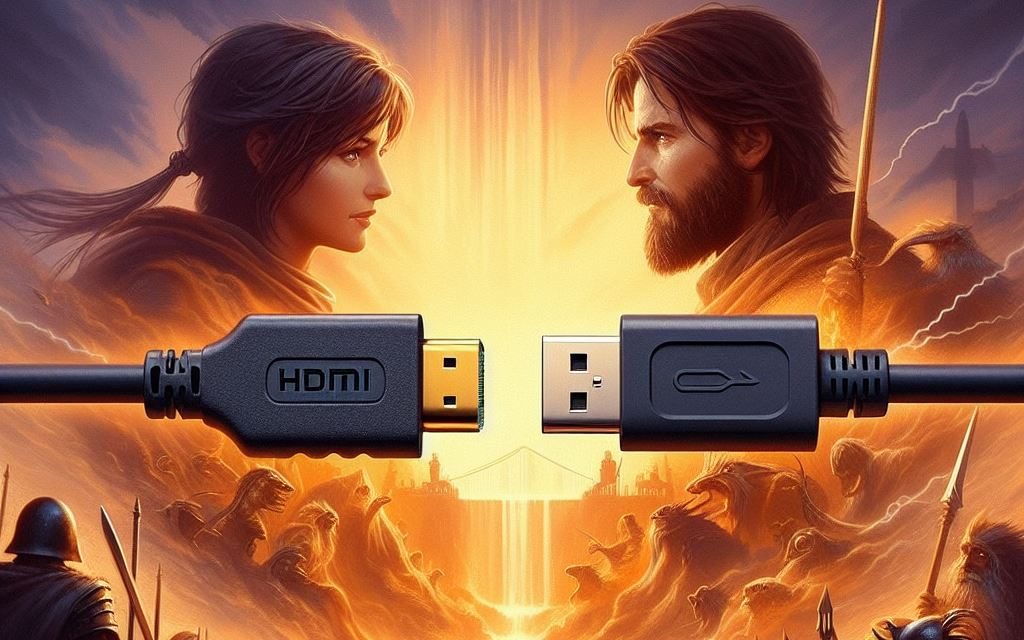
On the other hand, if you want to use multiple displays, save money, or have more options, DisplayPort 1.4 might be better for you, because it can support more flexibility and lower cost. However, both of them are very good and can work with most devices and displays.
READ MORE: H.264 vs. H.265 – Which is the Best Video Codec in 2024? ➜
Conclusion
HDMI 2.1 and DisplayPort 1.4 are both excellent choices for connecting high-end displays and devices, depending on your needs and preferences. HDMI 2.1 offers higher bandwidth and more features, but it also requires newer and more expensive hardware. DisplayPort 1.4 offers lower bandwidth and fewer features, but it also offers more compatibility and flexibility.
Ultimately, the best option for you will depend on the type of display, device, and content you want to use. We hope that this article helped you choose between HDMI 2.1 and DisplayPort 1.4 for your needs and circumstances. If you still have any confusion, feel free to ask us in the comments section below.
FAQs
Chroma subsampling is a technique that reduces the amount of color information in a video signal, allowing for higher resolutions and frame rates with lower bandwidth requirements. However, chroma subsampling can also degrade the image quality, especially for fine details and text.
Not necessarily. You can still enjoy 4K or 8K content with older versions of HDMI or DisplayPort, as long as your display and device support them. However, you may not be able to enjoy the full potential of 4K or 8K content, such as higher refresh rates, HDR, or VRR, without HDMI 2.1 or DisplayPort 1.4.
For HDMI 2.1, you will need a certified Ultra High Speed HDMI cable, which has a bandwidth of 48 Gbps and can support all the features of HDMI 2.1. For DisplayPort 1.4, you can use any standard DisplayPort cable, which has a bandwidth of 32.4 Gbps and can support most of the features of DisplayPort 1.4. However, you may need a certified DisplayPort 1.4 cable if you want to use DSC or MST.
Yes, you can use an adapter or a converter to connect HDMI 2.1 and DisplayPort 1.4 devices, but you may lose some of the features or performance of the original signal. For example, if you use an HDMI to DisplayPort adapter, you may not be able to use VRR or eARC. If you use a DisplayPort to HDMI adapter, you may not be able to use DSC or MST.
HDMI 2.1 and DisplayPort 1.4 offer several benefits for gaming, such as higher resolutions, higher refresh rates, HDR, VRR, and low latency. These features can enhance the visual quality, smoothness, and responsiveness of your gaming experience, especially for next-generation games.
You can check the specifications or the manual of your device or display to see if it supports HDMI 2.1 or DisplayPort 1.4. You can also look for the logos or labels on the device or display that indicate the version of HDMI or DisplayPort it supports.
 Reviewed by
Reviewed by 

